Pi-Organ-Synth Installation and User Guide
Download the .deb debian installation file on your computer. If you are using Buster desktop, can double-click on the .deb file and it will install the program in /opt/organsynth.... Double-clicking the .deb file launches the package manager which installs the program and its dependencies.
With a newer version of apt, the following may also work.
$ sudo apt install ./organsynth_0.5.0-buster_armhf.deb
This should unpack the executable and its resources. Check that the executable is found.
$ ls -l /opt/organsynth_0.5.0/bin
-rwxr-xr-x 1 root root 2779804 Mar 18 09:32 organsynth
You can verify the signature of the package with the dpkg-sig command. First, download our signing key and import it into your GPG keyring. Then, verify the signature of the .deb package.
$ curl -OL# https://mclarenlabs.com/keys/rootmclaren_public_key.asc
$ gpg --import rootmclaren_public_key.asc
$ dpkg-sig --verify release/organsynth_0.5.0-buster_armhf.deb
The installer creates a desktop icon for Pi-Organ-Synth. Click it to start up Pi-Organ-Synth.

Choose an Audio Output Device
Pi-Organ-Synth makes it easy to set up your audio card correctly. Use the drop-down menu of available audio output devices. In the example below, you can see the built-in Raspberry-Pi audio device (called "bcm2835") as well as a device labeled "USB" that is an external sound card. Choose one of these to get started. Pi-Organ-Synth does its best to set the audio parameters correctly.
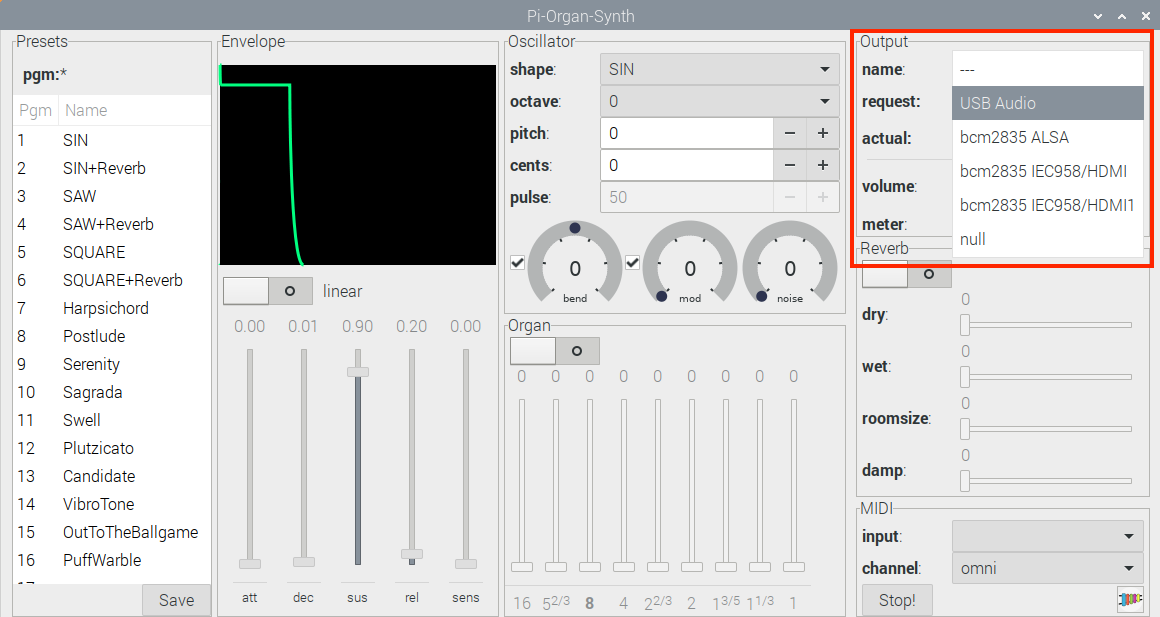
The Output Choose finds the sound cards in your system. USB Audio is a good choice if you have it and will give better audio quality than the built-in RaspberryPi audio called "bcm2835 ALSA". You can change the audio output at any time - even while playing, so don't worry about getting it wrong.
Choose a MIDI Input Device
Selecting a MIDI Controller input to use with Pi-Organ-Synth is easy too! Use the drop-down menu in the [MIDI] section to view your available inputs. In the example below, we can see a lot of MIDI devices! The ones we are interested in are the "Launchkey 25 MIDI 1" and the "Numark ORBIT". In our example, we're going to use our Launchkey 25 key MIDI controller.
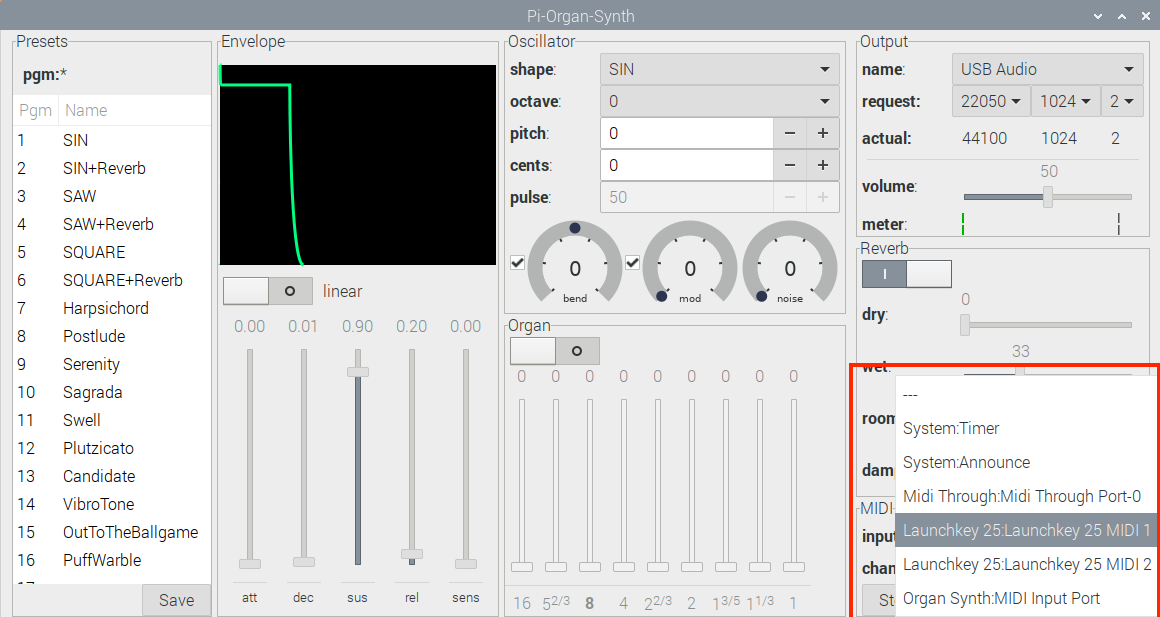
If you plug a new MIDI device into your system while Organ-Synth is running it will show up in the MIDI Chooser. You can change MIDI inputs on the fly.
Start Playing!
That should be enough to get you playing sounds on your Raspberry Pi! Make sure you have speakers or headphones connected to your Raspberry Pi output jack, or that your soundcard is turned on if you are using an external USB audio device.
And Have Fun!
Working with Presets
Presets give you some starter sounds, and also allow you to save and rename your own sounds. The Presets are in the left column. Here's how to use them.
Select a Preset
To select an existing preset, just double-click on the Number.
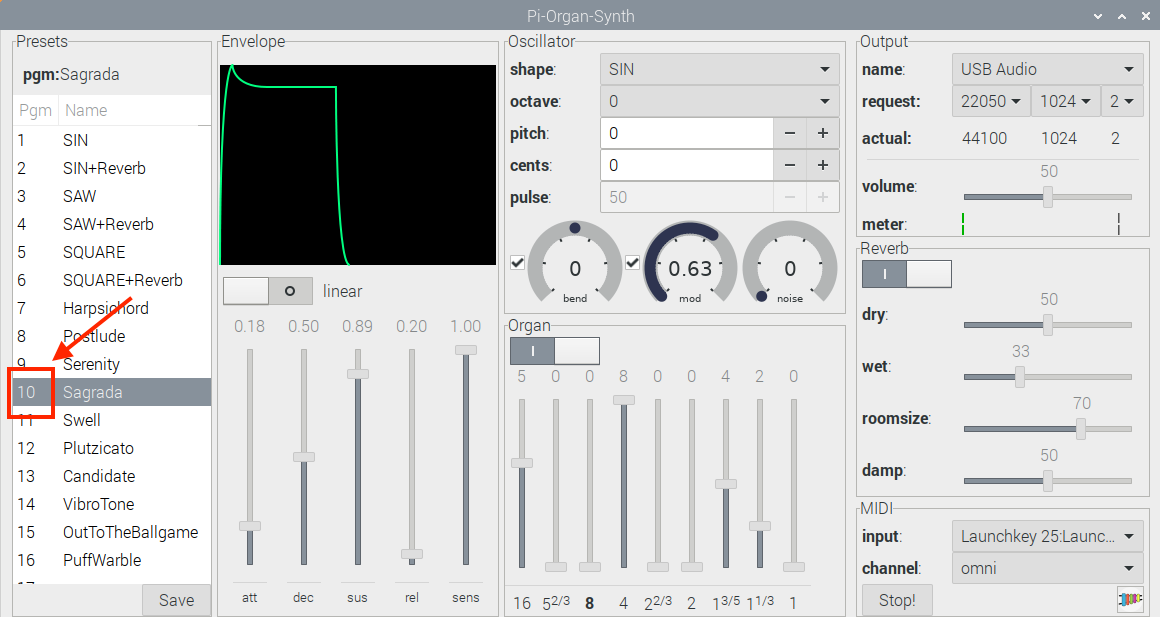
Save a Preset
If you have developed an interesting sound you like, you can save the configuration of all of the controls as a new Preset. To do this, single-click the Number and then press the [Save] button at the bottom.
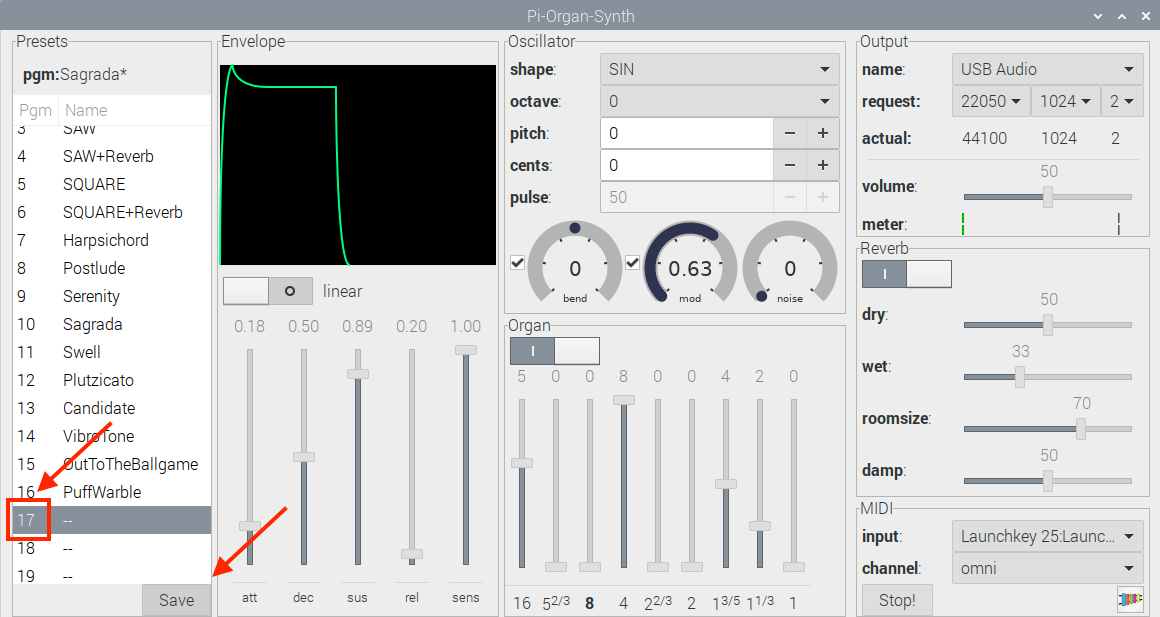
Rename a Preset
You can change the names of the Presets you save, or of any of the existing Presets. Double-click the name of the Preset you want to change, and it will become editable. Hit the [Return] key to stop editing and save the change.
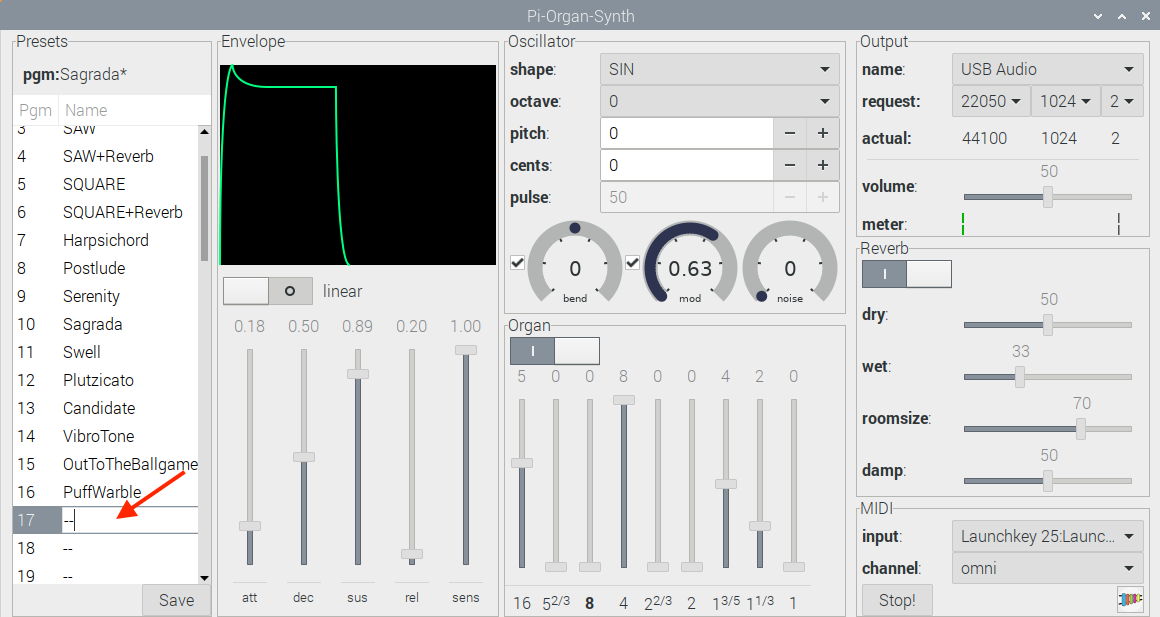
Release History
| Release | Date | Note |
|---|---|---|
| 0.5.0 | Mar 2020 | Audio improvements. RPi4 Buster Release. |
| 0.2.2 | Mar 2019 | Fixed installer bug. More responsive output device chooser. |
| 0.2.0 | Dec 2018 | Initial Release |